#Naiku
Text

Naiku tiene cara de flor jajaah

@littain
40 notes
·
View notes
Photo

20240209 Ise+Futami 3 by BONGURI
何度訪れても特別な場所。 @Ise Grand shrine, Ise city, Mie pref.(三重県伊勢市 皇大神宮)
#mainsanctuary#shougu#stonesteps#sekkai#toriigate#torii#shrinesgate#wood#tree#trees#shintoshrine#shinto#shrine#isegrandshrine#kotaijingu#isejingu#naiku#amaterasimasusumeomikami#amaterasu#ise#mie#japan#nikon#nikondf#cosna#cosinavoigtländerultron40mmf2sl2naspherical
7 notes
·
View notes
Photo
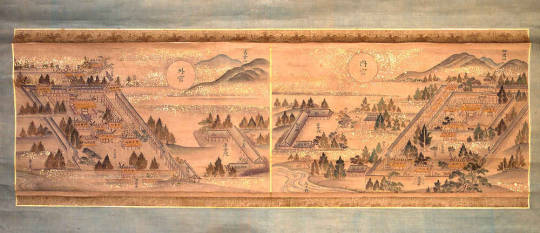
“Illustration of the Two Shrines of Ise” (伊勢両社宮画), 1824, depicting what is now officially termed Ise Grand Shrine (伊勢神宮) in present-day Ise, Mie Prefecture, with Gekū Shrine (外宮) on the left and Naikū Shrine (内宮) on the right
Hanging scroll, color on paper from the collection of Saikū Historical Museum (斎宮歴史博物館) in Meiwa, Mie Prefecture
Image from the museum’s official website
#japanese religion#伊勢国#ise province#三重県#mie prefecture#伊勢市#ise#伊勢神宮#ise jingu#ise grand shrine#外宮#geku#内宮#naiku#明和町#meiwa#斎宮歴史博物館#saiku historical museum#hanging scroll
13 notes
·
View notes
Text


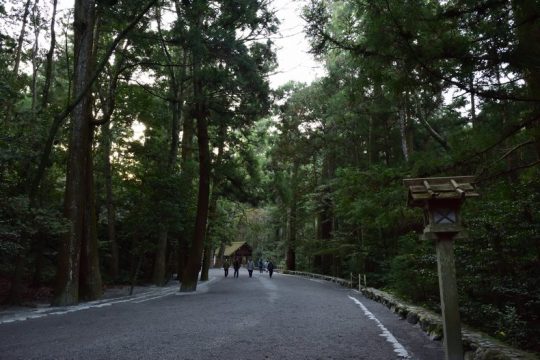


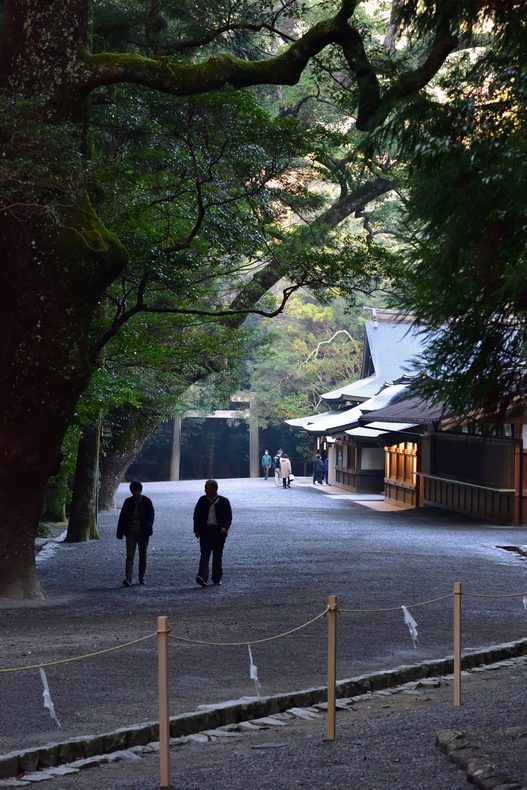

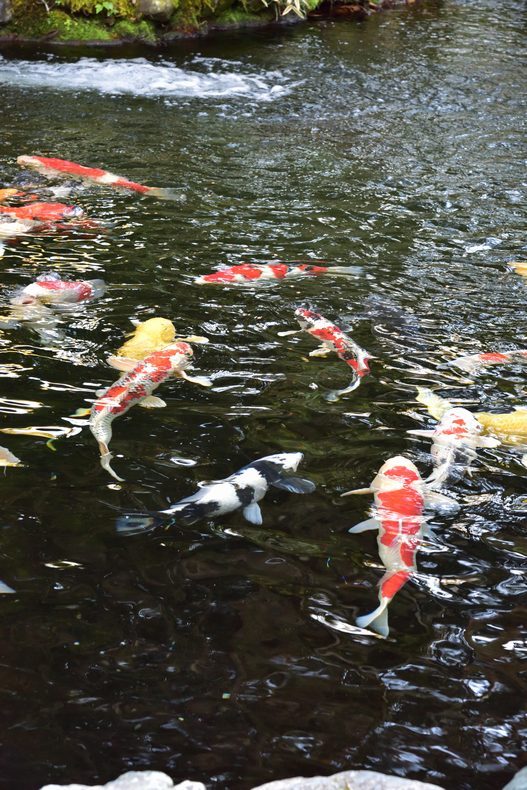
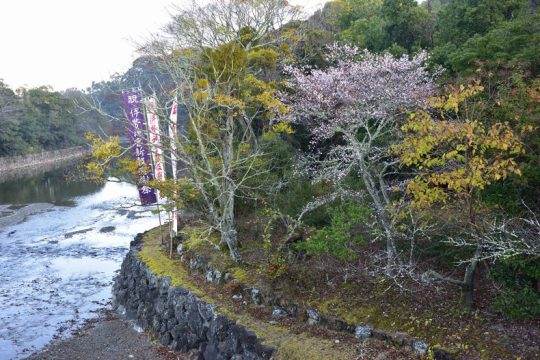
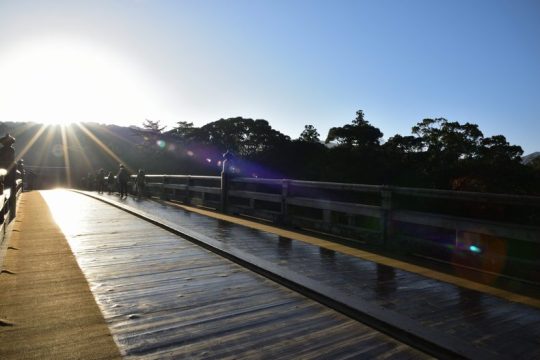
三重県 伊勢市 伊勢神宮 内宮
Japan Mie ise IseGrandShrine Naiku Shrine IseJingu
40 notes
·
View notes
Text
🇯🇵⛩️Japan day 9 - last day of the road trip
Today we visited Ise, birthplace of Shintoism and home of Japan's most important shrine to Amaterasu-Omikami, the sun goddess who gave birth to the Imperial line.
⛩️Ise-Jingu is an immense shrine spanning the entire region, and containing 125 small shrines. The most important one is Naiku, the one where Amaterasu-Omikami is enshrined. Historically the high priests and priestesses of the shrine belonged to the imperial line, and the current high priestess is the daughter of retired emperor Akihito. The entire shrine (like, the main buildings, torii, etc, the whole shebang) is rebuilt anew every twenty years; the operation takes nine years and involves hundreds of rituals.
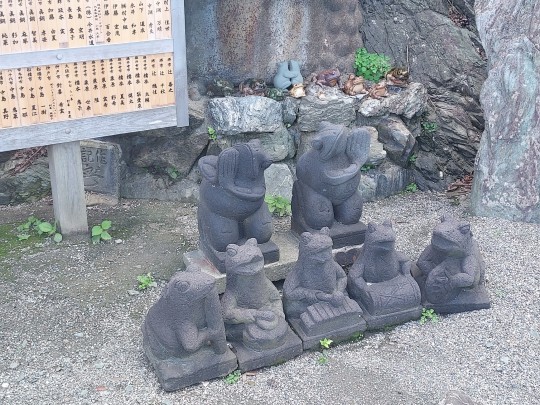
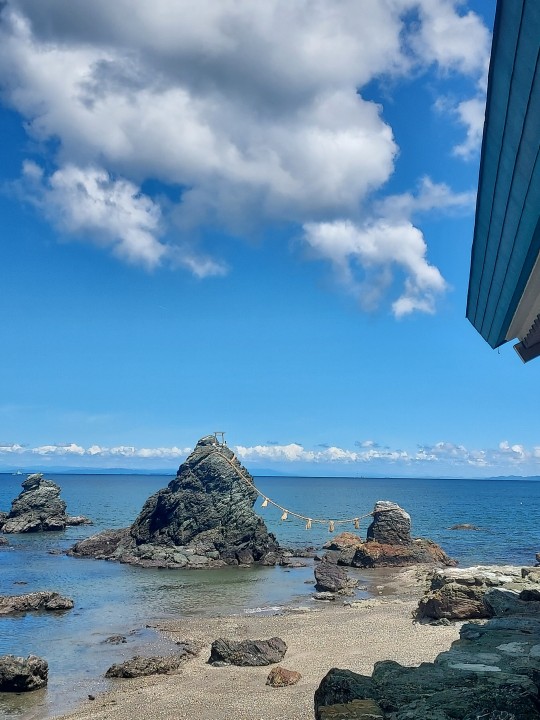
Ise shrine has been an important place of pilgrimage since the Edo era. The traditional route is to first purify yourself at Futamiokitama shrine, home of the famous Meoto Iwa "married stones", where young women pray for an auspicious marriage. The rocks represent Izanagi and Izanami, the original gods and parents of Amaterasu & co. The enshrined kami, Sarutahiko Okami, has frogs for their messenger animal, and there are frog statues and frog-decorated merch to buy. I nearly bought a tadpole-shaped omamori (might go back tomorrow for it).
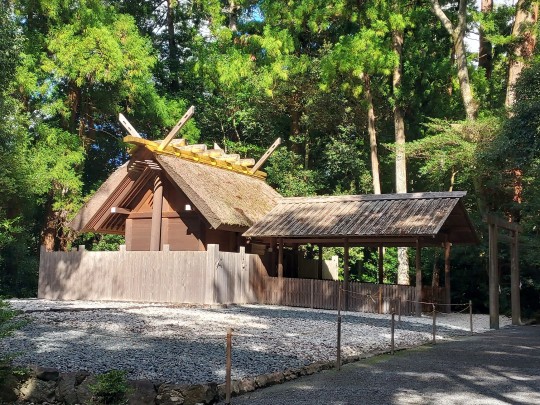
Then you visit Geku shrine, dedicated to Toyouke Ohime. She is the goddess of food, clothes and homes. She was summoned and enshrined in Ise after an emperor had a vision of Amaterasu basically saying "I love it here but there's no food, bring my pal over so she can cook for me".

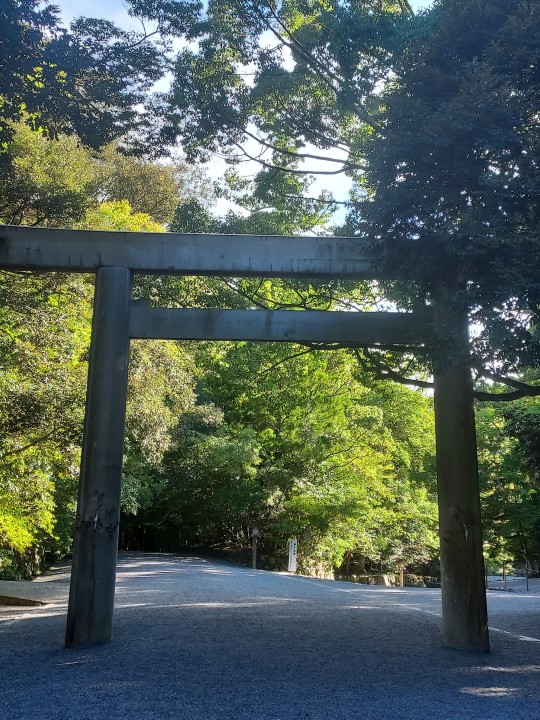
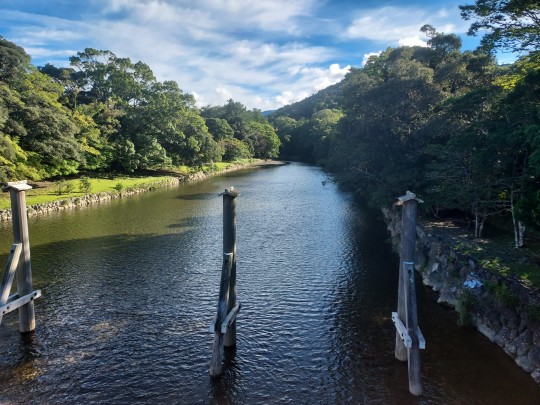
And lastly, you visit Naiku shrine, home of Amaterasu the sun goddess, protector of Japan. You can even ourify yourself djrectmy in the river rather than in a temizuya.
The shrines themselves were a little underwhelming, especially when compared with the other shrines I've seen so far. All of the buildings were made of plain wood, which is logical when you account for the fact that they're rebuilt every 20 years. You also cant see the atars, which are hidden behind walls or cloths, and there are no statues.
On the other hand, plain wooden buildings shaped like rice granaries in the middle of a forest /does/ bring you closer to nature, which is the origin of shintoism (which is at heart an animist belief). All in all, it was a important place to cross off the bucket list.
Also, tonight I can sleep on a real mattress for the first time in 10 days 🥳 And tomorrow we head back to Tokyo.
14 notes
·
View notes
Text
Yamatohime-no-mikoto
~ The woman who determined the location of Ise Jingu ~
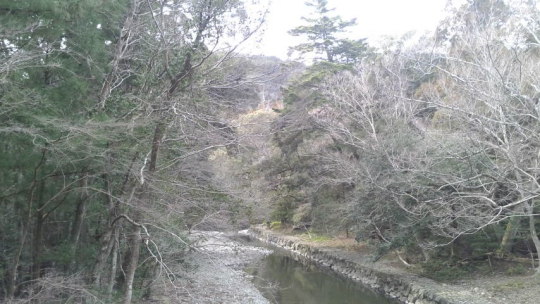
Winter scene
Ise Jingu, with its history of over 2,000 years, is the most prominent among Shinto shrines. Amaterasu-Omikami, a Japanese goddess, is enshrined there.
The Nihon Shoki, the oldest formal chronicles of Japan, says that the location of Ise Jingu, was determined by a revelation from Amaterasu-Omikami herself: “I shall be here eternally”.
Yamatohime-no-mikoto was the person who received the revelation. She was the daughter of the 11th emperor. She took over her aunt’s position, and took the lead in an imperial tour to seek out a new, appropriate place to enshrine Amaterasu-Omikami.
After leaving Yamato where the emperor lived, the present-day Nara Prefecture, she and the members of her party went on northbound through the west area of Mie Pref. to the area beside the east side of Lake Biwa, in Shiga Pref.
After that, they changed the direction to head westbound and moved into the west area of Gifu Pref. They changed their direction there again and went on south through the east area of Mie Pref. along Ise Bay.
It is said that they continued their tour while staying in many regions for years and teaching rice cultivation and weaving to the people there. The result of such a tour style is that it took a long time for her tour to come to an end.
The end of her long and wandering tour was Ise, the place she finally received the revelation from Amaterasu-Omikami.
The mysterious word of “Revelation” and a woman of “Yamatohime-no-mikoto”, who achieved her mission as the leader of a unique project in ancient times, strongly fascinated me and brought me to Ise Jingu.
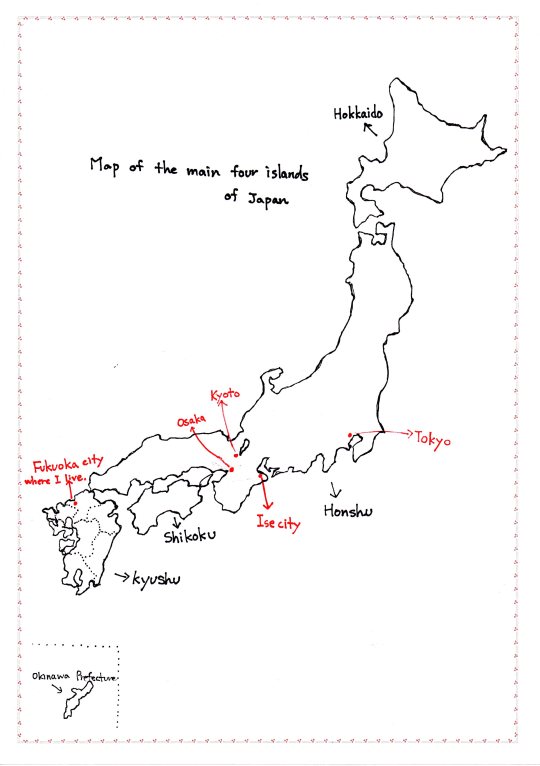
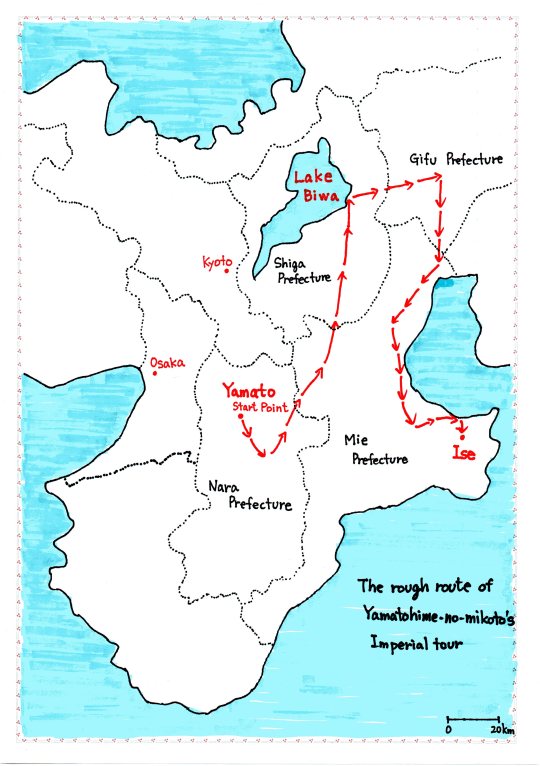
~ ❀ ~ ❀ ~ ❀ ~ ❀ ~ ❀ ~ ❀ ~
Ise Jingu includes 2 Jingus and 123 shrines. The center of Ise Jingu is two Jingus: Kotaijingu, called Naiku, where Amaterasu-Omikami is enshrined, and Toyo’ue-daijingu, called Geku, where Toyoue-Omikami is enshrined.
The total area of Ise Jingu, including Naiku and Geku and forests, is vast; it occupies approximately 20% of Ise City. The English HP of Ise Jingu says it is almost the same scale as the center of Paris.
Naiku and Geku are in different forests about 5km apart. When we visit Ise Jingu, we generally visit Geku first, and then visit Naiku. I also followed this rule.
Both Jingus were so calm and peaceful that I felt comfortable there. I enjoyed the beautiful scenery in winter.
Moreover, my visit was not only enjoyable but also meaningful: I saw lots of the hundreds-of-years old enormous trees, the main sanctuaries of Niku and Geku and other structures made from plain lumber, and Kodenchi of Geku.
*Kodenchi
Every 20 years, the main sanctuaries of Niku and Geku, and the divine places of 14 shrines that have deep relation to Naiku or Geku, are reconstructed on each Kodenchi, the previous site that is adjacent to the present site, with the same dimensions. After that, each object of worship is moved into a new one.
This reconstruction, which has the purpose not only of passing of Ise Jingu on to the next generation but also the passing on of architectural techniques, is the most important ritual event, called Shikinen-sengu.
The next Shikinen-sengu will take place in 2033. Each present site will become a vacant lot and will be called Kodenchi for the next 20 years.
Ise Jingu, which was determined by the revelation that Yamatohime-no-mikoto received from Amaterasu-Omikami 2,000 years ago, exits at the same location even now, and it gets so many domestic and foreign visitors.
How great the thing she achieved was!
~ ❀ ~ ❀ ~ ❀ ~ ❀ ~ ❀ ~ ❀ ~
My visit to Ise Jingu was impressive. The thing that has captured me even to this day is the sunshine that I saw at the Main Sanctuary of Geku.
I saw it unexpectedly. When I walked a path outside the row of trees alongside the Kodenchi, I happened to turn my attention toward the Kodenchi. I noticed the brightness seen through the half-darkness that was created by the row of trees.
It was hard for me to grasp the situation immediately. I stopped to look in that direction and gradually I realized what it was.
It was the brightness of the soft and graceful golden sunshine pouring into the Main Sanctuary surrounded by a wall. The Main Sanctuary, bathed in the sunshine was calm and spiritual.
When I saw the sunshine, I believed that Yamatohime-no-mikoto had also seen the beautiful sunshine and a spiritual scene, or landscape, or view in the sunshine in Ise after her long and tough tour, and also believed she had received the revelation then.
~ ❀ ~ ❀ ~ ❀ ~ ❀ ~ ❀ ~ ❀ ~
A long time has passed since I knew the person of Yamatohime-no-mikoto and her imperial tour and became interested in them. I didn’t always think of her. However, even if I forgot her, I remembered her again.
Every time I remembered her, I imagined various things that I think might be related to her and her tour: there might have been some political purposes in her tour; also, what were the tools of rice cultivation and weaving like in 2,000 years ago?, and so on.
I enjoyed such times freely because they occurred in the old age which no one knew the facts and because I didn’t need to be determine any conclusions accurately, since I’m not a researcher.
~ ❀ ~ ❀ ~ ❀ ~ ❀ ~ ❀ ~ ❀ ~
The biggest mystery for me was the reason why she repeated leaving the regions where she stayed for years even though she built temporary shrines for Amaterasu-Omikami and grew rice from nothing.
She broke off all the things she had built up there, making efforts to be mindful of the people around her or to keep thinking about the things that she and everyone would do as the leader of the tour. She repeated that.
It was difficult for me to find out my own answer, but I hit upon an idea.
It might be that she and her aunt, who had sought the location for Amaterasu-Omikami for long time before her, believed that Amaterasu-Omikami would give them some kind of expression of her intension when they found the right location.
I think every region where Yamatohime-no-mikoto stayed for years was a good one. I guess she had expectations for many places.
However, when she realized she wouldn’t get any expression of Amaterasu-Omikami’s intension even if she would wait longer, she broke off everything and headed toward the next place. I consider that the long wandering tour was the result of this repetition.
~ ❀ ~ ❀ ~ ❀ ~ ❀ ~ ❀ ~ ❀ ~
I guess the people who sent her on this tour must have asked her about her progress many times, half-giving up and half-rushing. However, I believe it must have been herself who felt the most frustrated.
How disappointed she must have been when she left the places where she stayed at for years! In spite of being in such situations, she didn’t give up.
When I imagine the difficulties and repeating disappointments she experienced, I can’t help but admire her strong will.
At the same time, I think of how she must have felt when she received the revelation. How relieved she must have been at the time!
I believe that she was looking at the celestial sunshine and spiritual scenery that the sunshine created, which were more than enough to make up for all her struggles and difficulties, when she finally received the revelation from Amaterasu-Omikami.
~ ❀ ~ ❀ ~ ❀ ~ ❀ ~ ❀ ~ ❀ ~
The sequel to the story about Yamatohime-no-mikoto
Yamatohime-no-mikoto kept staying in Ise and serving Amaterasu-Omikami after having fixed the location for enshrining Amaterasu-Omikami.
She led the constructions of other shrines in Ise Jingu, organized the various rituals of Ise Jingu that have been performed to the present time, and determined the offerings for Amaterasu-Omikami.
She was considered as the origin of a system of Saio in later periods; Saio was an unmarried imperial princess who served for Amaterasu-Omikami in place of the emperor at Ise Jingu.
In 1923, the people involved in Ise Jingu and the people of Ise, who had thanked Yamtohime-no-mikoto and her achievements, built Yamatohime-no-miya, a shrine, to deify her. I like this story.
I think Yamatohime-no-mikoto would definitely say, “I did just what I should do”, but at the same time, I believe she would be touched deeply by their appreciation for her.
Yamatohime-no-miya is in a forest between Naiku and Geku.
It was a beautiful shrine and suited to her: the simple and graceful divine place, the long and wide approach to the divine place, the well-maintained forest on both sides of the path, the singing of birds and the sunlight that filtered through the leaves of trees and poured onto the stairs toward the divine place.
They made me feel the people of Ise’s deep appreciation of her. I felt a great sense of relief there.

The stairs toward the divine place of Yamatohime-no-miya
倭姫命(やまとひめのみこと)
~ 伊勢神宮の場所を決めた女性 ~
二千年以上の歴史を持ち、神社の最高位にある伊勢神宮。そこには、天照大御神という女神が祀られています。
日本最古の正史である日本書紀によると、伊勢神宮は、天照大御神自身の「ここに居ようと思う」というにお告げによってその場所が決まったということです。
お告げを受けたのは、倭姫命(やまとひめのみこと)という女性。第11代天皇の皇女で、伯母の仕事を受け継ぎ、天照大御神を祀る新たな場所を探すための巡幸を行った人です。
彼女と一行は、天皇が住むヤマト、現在の奈良県を出発し、三重県の西側の地域を通り、滋賀県の琵琶湖の東側の地域まで北上。その後、東へ進行方向を変え、岐阜県の西部に入ります。そして再び進行方向を変え、愛知県を通り三重県東部を伊勢湾沿いに南下しました。
幾つもの地域に何年も滞在して、人々に稲作や機織りを教えながらの旅だったそうです。巡幸が終わりを迎えるまでには長い時間がかかり、その最後に、彼女は伊勢で天照大御神からのお告げを受けました。
「お告げ」という神秘的な言葉と、古代に行われた特別なプロジェクトのトップとしての使命をやり遂げた倭姫命という女性に強く惹かれ、伊勢神宮に行ってきました。
~ ❀ ~ ❀ ~ ❀ ~ ❀ ~ ❀ ~ ❀ ~
伊勢神宮には、125の神社があります。その中心は2つの神宮。天照大御神が祀られている内宮と呼ばれる皇大神宮と、豊受大御神が祀られている外宮と呼ばれる豊受大神宮です。
内宮と外宮、そして神宮の森を合わせた伊勢神宮の面積は広大で、伊勢市の約20%に及ぶということです。伊勢神宮英語版ホームページによると、パリの中心部と同じくらいの広さだとか。
内宮と外宮は、約5キロメー��ルはなれた別の森の中にあります。参拝は、一般的に外宮から内宮の順で行います。私もそのルールに則り参拝しました。
どちらも森の中にあるので、落ち着いていて気持ちがよく、冬枯れの美しい景色を楽しみながらの参拝となりました。
そして楽しいだけでなく、樹齢何百年という木々、そして、内宮と外宮の正宮を始めとした素木造りの様々な建造物、外宮の古殿地*などを見ることができ、とても有意義でした。
*古殿地
内宮と外宮の正宮、そして内宮と外宮に関係が深い14の神社の社殿は、20年毎に、それぞれの大きさを変えることなく、内宮と外宮の現在の正宮の隣にある、前に正宮があった場所(古殿地)に新たに建て替えられ、その後、ご神体がそこに移されます。
神宮を後世に受け継ぐだけでなく、建築技術の継承という目的を持つこの20年毎の建て替えは、伊勢神宮最大の行事で神宮式年遷宮と呼ばれます。
次の式年遷宮は2033年。内宮と外宮の正宮、そして他の14の神社の社殿が現在ある場所は、遷宮後空き地になり、その後20年間、古殿地と呼ばれることになります。
2000年前に倭姫命が天照大御神からのお告げを受け取り、その場所が決まった伊勢神宮は、今も同じ場所に存在し、国内外を問わず多くの人が訪れています。
彼女が成し遂げたことは何と大きかったことか。
~ ❀ ~ ❀ ~ ❀ ~ ❀ ~ ❀ ~ ❀ ~
印象深かった伊勢神宮参詣。その中で、今でも私の心を捉えているのは、外宮の正宮で見た美しい陽の光です。
それは偶然でした。外宮の正宮の古殿地の横にある道を歩いていた時の事です。ふと古殿地の方に目を向けると、木立の薄暗がりの先が妙に明るいことに気が付きました。状況がよく呑み込めなかったので、立ち止まってその方向を見つめていると、次第にわかってきました。
それは、塀で囲まれた正宮に降り注ぐ、柔らかで気品に満ちた金色の陽の光の明るさだったのです。��して、その光に抱かれた正宮は、とても静かで神秘的でした。
そしてその時、私は、倭姫命は長く大変な旅の後、伊勢の地で美しい陽の光と、その光が作り出す神秘的な情景か景色、あるいは風景を見たのだと、そして、その時お告げを受けたのだと思ったのです。
~ ❀ ~ ❀ ~ ❀ ~ ❀ ~ ❀ ~ ❀ ~
倭姫命と彼女の巡幸を知り興味を持ってから、長い時間が経ちました。いつも彼女のことを考えていたわけではありません。ですが、忘れてもまた思い出すのです。思い出す度に、彼女や彼女の巡幸に関係ありそうなことを色々な事を考えました。
例えば、彼女の巡幸には他の目的があったのではないかとか、2,000年前の稲作や機織りの道具はどんなものだったのだろうとか。
本当のことは誰も知らない時代の事ですし、私は研究者ではないので正しい答えを出す必要もなく、自由に想像ができて楽しかった。
~ ❀ ~ ❀ ~ ❀ ~ ❀ ~ ❀ ~ ❀ ~
私にとっての最大の謎は、彼女が何年も滞在した地を去ることを繰り返した理由でした。天照大御神を一時的に祀る神社を建て、恐らく一から田を作ることから始めて、米作りをしていたのでしょうに。
彼女は、巡幸の長として周りに気を使い、やるべきことを考え続ける、そんな努力をして創り上げた、神社、米作り、人間関係、全てを終わりにして、次の土地へと向かうことを繰り返したのです。
その謎にする自分なりの答えを見つけることは中々できなかったのですが、ある時思いました。
倭姫命、そして彼女の前に、やはり長い年月をかけて天照大御神を祀る地を探した彼女の伯母は、もし彼女達が天照大御神に相応しい土地を見つけた時には、天照大御神から、何らかの意思表示があると考えていたのではないかと。
倭姫命と一行が何年も滞在した土地は、どこも良い所だったのだと思います。彼女の中では、候補地は幾つもあったのではないかと考えます。
しかし、それ以上そこに留まっても天照大御神からの意思表示を得られないと考えた時、彼女は全てを断ち切り、次の土地へと向かった。その繰り返しの結果が、あの長い長い旅だったということなのだと思うのです。
~ ❀ ~ ❀ ~ ❀ ~ ❀ ~ ❀ ~ ❀ ~
倭姫命をこの巡幸に送り出したヤマトの人々からは、何度も進捗状況の問い合わせがきていたことでしょう。半ば諦めたように、半ばせかすように。しかし、一番焦りを感じていたのは、彼女自身であったと私は思います。
何年も滞在した土地を去る度に、彼女はどれほど気落ちしたことでしょう。そんな状況にいたにも拘わらず、倭姫命は諦めなかった。倭姫命が経験した困難と繰り返す失望を想像する時、私は彼女の意志の強さを尊敬せずにはいられないのです。
そして、伊勢で天照大御神のお告げを受けた時の彼女の気持ちを思います。どれほど安心したことかと。そしてその時、彼女は、それまでの苦労や困難を埋め合わせるに余りある、美しい陽の光と、その光が創り出す美しい光景を見ていた。私はそう思っています。
❀ 倭姫命の話の続きとして ❀
倭姫命は天照大御神を祀る場所を定めた後も、伊勢に留まり天照大御神に奉仕しました。伊勢神宮にある他の神社の造営を指示し、現在まで執り行われている様々な神事を整え, 天照大御神への供物を定めたのは彼女です。
彼女は後に制度化された斎王、伊勢神宮で天皇の代わりとして天照大御神に奉仕する未婚の皇女の起源の人物だと考えられています。
大正時代の1923年、倭姫命と彼女の功績に感謝する伊勢神宮の関係者と伊勢の人々は、倭姫宮という神社を造営し、彼女を祀りました。私はこの話が好きです。
倭姫命はきっと「私はやるべきことをやっただけです。」と言うと思います。ですが、彼らの感謝の気持ちをこの上なく嬉しく思っていると思うのです。
倭姫宮は内宮と外宮の間にある森の中にあります。
広く長い参道、手入れの行き届いた参道の両側の森、静けさの中の鳥のさえずり、社殿に上る階段に落ちる木漏れ日。倭姫命への伊勢の人々の気持ちを感じさせる、美しく、倭姫命に相応しい神社。心が温かくなりました。
2 notes
·
View notes
Photo
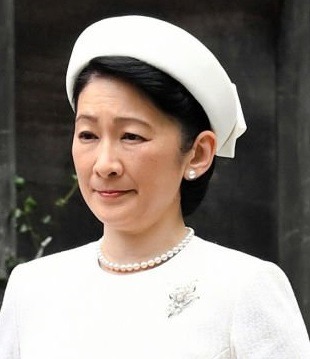


Crown Princess Kiko of Japan visiting the Naiku, the inner shrine of Ise Shrine in Mie to report on the proclamation of Crown Prince Fumihito as first in line to the Chrysanthemum Throne - 21.04.22
3 notes
·
View notes
Text
"The shrines of Ise were not of the yashiro type: they were not temporary constructions to which deities were invited from some other location for the duration of the ritual. Rather, they were residences of human-like beings. These shrines were called miya, 'venerable dwellings,' and the gods who resided in them were served with food and given clothing and other goods throughout the year."
—A New History of Shinto, by John Breen & Mark Teeuwen

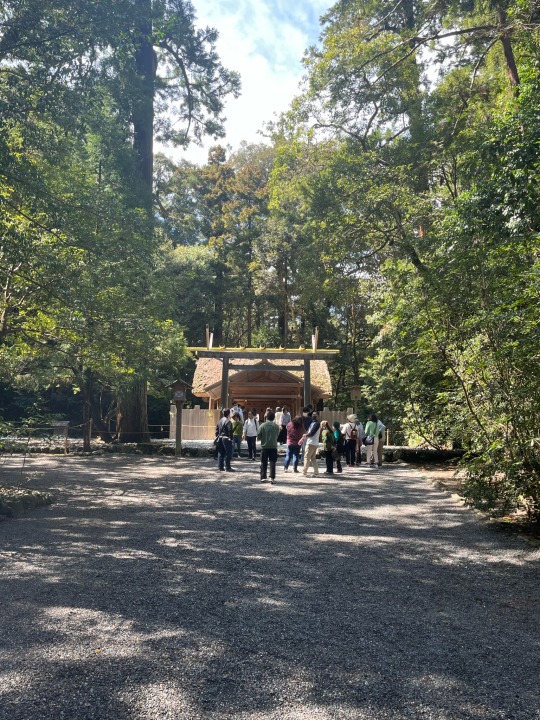

(Pictures from Geku and Naiku at Ise Shrine by Me, please do not use without asking first!)
0 notes
Text
Toba, Japan
July 1, 2023. (Oh - I am always behind!)
We left Tokyo on the Shinkansin bullet train headed to Nagoya. The train had many stops but each time we would pull out of the station and GO! The ride was amazingly smooth and the seats were roomy and of course everything was clean - and I mean CLEAN!
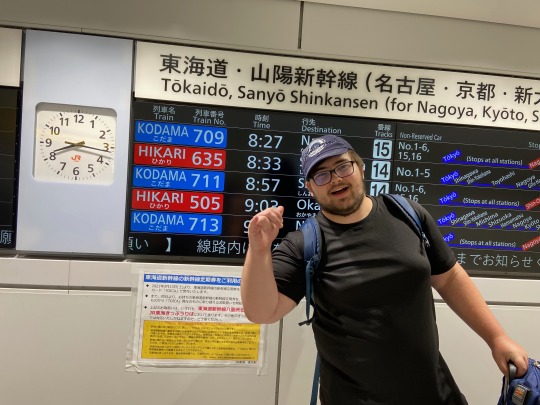

The Japanese people are very polite and bow to each other upon meeting or greeting and before leaving. The conductor would enter the car and bow then before he left the car he would turn face us and bow before exiting.
Mark said an unplanned good-bye to his cane as he exited with all our luggage but without the cane. We had only 50 minutes to get our food (bento boxes) and get to our next train - so it didn't cross his mind until too late. (No worries - he has a new one with a much prettier handle.). The store we visited to buy our lunch has shelf after shelf of bento options.

In Nagoya we exited the Shinkansin and boarded an "express" train to Ujiymada. This express train is part of the general transportation system and we used our subway pass to access this train. This part of the trip also had many stops and we enjoyed seeing the countryside - something that could be kinda' nauseating at 190 mph. The train was smaller but just as clean.
Our new location is mountainous, lush and very different from the massive city of Tokyo. We are seeing little villages, lots of rice fields and many tiny little cemeteries. Cremation is standard practice here so the cemeteries are compact but the headstones impressive.

A bus was awaiting our arrival and we boarded it and traveled about 30 minutes to the Ise Grand Shrine. The Torii gate designates a sacred area with a shrine where believers can go to pray. The Torii Gate in front of this park was HUGE
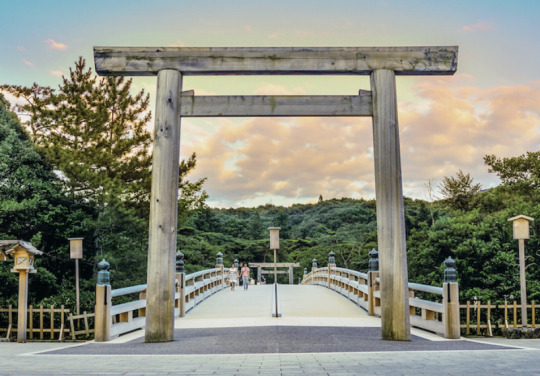
The Naiku and the Geku shrines dedicated to the Shinto kami, Amaterasu, kami of the sun. We visited Naiku.
The Shinto shrines were beautiful and they were in this gorgeous park with forested with ancient trees. There are specific mid year rites that take place on June 30 and July 1 - so the place was hopping. Shinto is not a religion but a more of philosophy. Shintoists believe that there are spirits in everything called "kami" - some good and some bad. When a Shintoist goes to the Shrine he prays that the bad spirits will be diminished and the good spirits will guide his life and the lives of people he loves
Here is the buzz about this shrine from the website: "Around 2000 years ago the divine Yamatohime-no-mikoto, daughter of the Emperor Suinin, set out from Mt. Miwa in modern Nara Prefecture in search of a permanent location to worship the goddess Amaterasu, wandering for 20 years through the regions of Omi and Mino. Her search eventually brought her to Ise, in modern Mie Prefecture, where she is said to have established Naikū after hearing the voice of Amaterasu saying "(Ise) is a secluded and pleasant land. In this land I wish to dwell." Before Yamatohime-no-mikoto's journey, Amaterasu had been worshiped at the imperial residence in Yamato, then briefly at Kasanui in the eastern Nara basin. When Princess Yamatohime-no-mikoto arrived at the village of Uji-tachi, she set up fifty bells to designate the area as enshrined for the goddess Amaterasu, which is why the river is called the Isuzu, or "fifty bells".
This is also amazing.... (lifted right from the Ise Grand Shrine website)
"The old shrines are dismantled and new ones built on an adjacent site to exacting specifications every 20 years at exorbitant expense, so that the buildings will be forever new and forever ancient and original. The present buildings, dating from 2013, are the 62nd iteration to date and are scheduled for rebuilding in 2033. The twenty-year renewal process is called the Shikinen Sengū. This happens all over - not just here - FYI. (There will not be a test on this...)
The team which builds the shrine is typically formed around a few factors. Since many of the building techniques haven't changed since the creation of the Ise Shrine, the workers who are hired to build the shrine must be skilled in specific techniques. Power tools are not allowed within the area of the shrine, which means that skilled artisans and carpenters known as miyadaiku are necessary in the construction process. The unit of workers is also organized around relative skill levels, and less experienced workers will work on smaller tasks than more experienced workers. The importance of hiring specifically local artisans has decreased throughout time, for the pool of available miyadaiku has thinned out."
Me again...There are festivals celebrating many steps of the dismantling and rebuilding. Finding the correct materials is a process that begins 40 years before as some of the materials must be aged. Fascinating! This process may be used for other shrines - but none were mentions - just this one.

This is my pic and it looks foggy - BUT it was so hot and muggy that I couldn't wear my glasses and even my phone lens were fogged. PHEW! But despite the fog - can you imagine taking this down!?!??!
Despite the beauty of the place - it was here that someone could have made a comedy video about me and Mark.
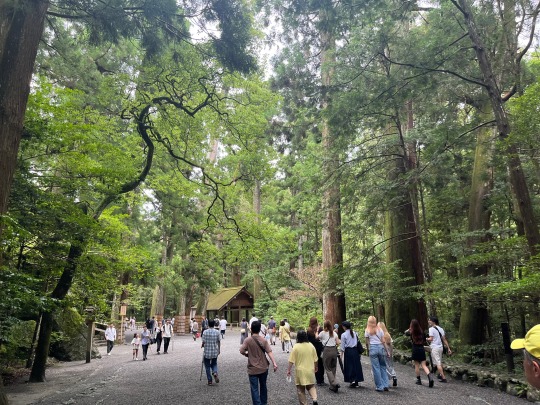

This park is big and the paths are gravel - which are hard to walk on for everyone - but for someone who using a cane it is even harder. For someone using a cane who has lost his cane - a flipping nightmare. BUT - they have free wheelchairs - and WHAT?!?!? - they are electric. OMG!! LUCKY US!
So Mark and Jay get wheelchairs - BUT the damn control is in the back and it is a joystick. Carol, Jay's wife, got the hang of it immediately - but I couldn't - AND to make things worse I started laughing and laughing and laughing. I couldn't go straight to save my life and poor Mark looked like he was riding a bucking bronco. Finally he could take it no more and got out and used it for balance and drove it himself. I tried several more times -and there were times I did OK - but... OMG!!! Anson took a turn and gave Mark a better ride - but by the time we needed to get back on the bus , Mark was thrilled to have that adventure in the rearview mirror. We all have our strengths and using a joy stick is not mine! Sorry Mark!

On to our next adventure...
We arrived in Toba and although I should have known it by looking at the map - I didn't realized it was a seaside resort.

Even more surprising was how large and beautiful each of our rooms were. Anson's room had a beautiful deck overlooking a rock garden and our room overlooked the ocean and a small harbor. The photo below on the right is from our room and from the left is from Anson's room. SWEET!!!


We are staying at the Todaya Hotel which houses a several restaurants. I will say that the food was not only edible art but also delicious. They also have onsens (public baths) in many flavors: Single private - small groups or the big party size - which is outdoors. The boys tried most of them. OF COURSE we had to dress in our yukatas to get ready for the big soaking relax in your birthday suit!

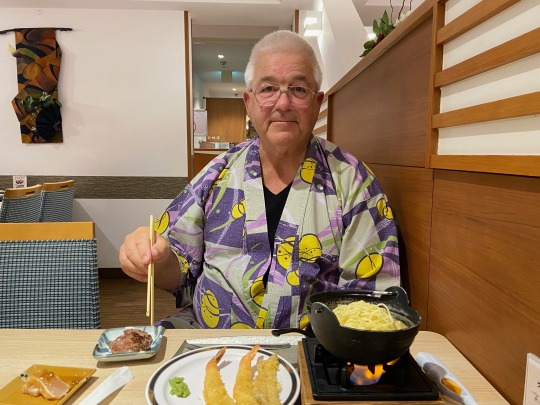
Anson-san in his first onsen - private, please. No photos in the places your share!

Most of our group was in to it!!

We are having a great time in Japan.
Stay tuned!
1 note
·
View note
Text
Odia Story Book Patadei
In the world of Odia fiction literature, Binapani Mohanty has made a name for herself. With the release of "Gotie Ratira Kahani" in 1960, she officially started her literary career as a storyteller. Pata Dei, Khela Ghara, Naiku Rasta, Bastraharana, Andhakarara, Kasturi Murga O Sabuja Aranya, and Michhi Michhika are some of her most well-known tales. The 1990 Sahitya Akademi was awarded by the short story collection "Pata Dei and Other Stories." In 2020, she received the Padma Shri honour.
In 1986, Lata in Femina released her short story Pata Dei. Its Hindi dramatisation was broadcast as a series named Kashmakash in 1987 on Doordarshan.The Oriya short story compilation Patadei won the Sahitya Akademi award for its insightful language use and profound themes.
0 notes
Photo

お伊勢さんと赤福🙏 #伊勢神宮おかげ横丁 #伊勢神宮内宮 #赤福ぜんざい #赤福茶屋 (伊勢神宮 内宮 / Naiku) https://www.instagram.com/p/CpaSN8cSnJQ/?igshid=NGJjMDIxMWI=
0 notes
Photo

伊勢〜鳥羽〜志摩までの道はちょうど良いキツさのアップダウンで楽しかった #伊勢志摩 #自転車旅 #自転車 #旅 (伊勢神宮 内宮 / Naiku) https://www.instagram.com/p/BRAe-W1gpdD3BklJqMYeorV-di2Gf0oShg8NVc0/?igshid=NGJjMDIxMWI=
0 notes
Video
20230714 Ise+Toba 1 by Bong Grit
Via Flickr:
内宮の参道。いつ行っても空気が締まってる。 @Naiku, Ise city, Mie pref. (三重県伊勢市 内宮)
#Approach#Forest#Green#Tree#Trees#Nature#Plant#Gravel#Pebbles#Amaterasu-Omikami#Naiku#Kotai Jingu#Ise jingu#Shinto shrine#Shinto#Shrine#Ise#Mie#Japan#Nikon#Nikon D850#AF-S NIKKOR 50mm f/1.8G (Special Edition)#flickr
7 notes
·
View notes
Photo

【伊勢神宮参拝】 毎年恒例 伊勢神宮参拝。 外宮→内宮→赤福本店 赤福本店では 赤福特注火鉢が用意されており 久しぶりに火鉢で暖を取りました。 火鉢の中の灰は 綺麗に整えてあり 灰ならしもしっかりされていて しかも白い炭がちゃんと入れてあったので とても感動。 茶道をしていたので その辺のところは ちょっと気になるのです(笑) こうゆう経験をすると 実家の火鉢 使おうっかな、、、 と思う。 その後 豊受大神宮別宮 月夜見宮に ちょっと寄って 例の場所 一升びん本店に 向かいます♪ #伊勢神宮 #外宮 #内宮 #月夜見宮 #一升びん #一升びん本店 (伊勢神宮 内宮 / Naiku) https://www.instagram.com/p/CnvQy8UyqbJ/?igshid=NGJjMDIxMWI=
0 notes
Text



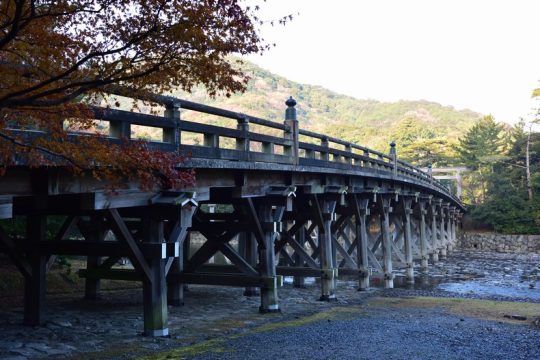

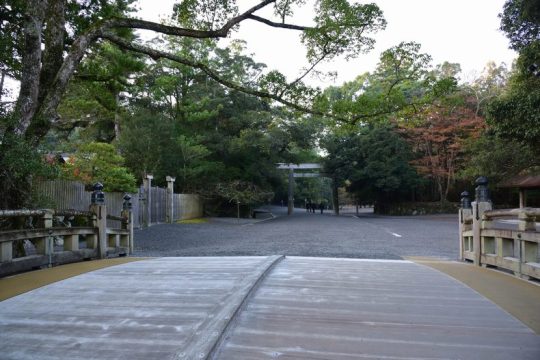
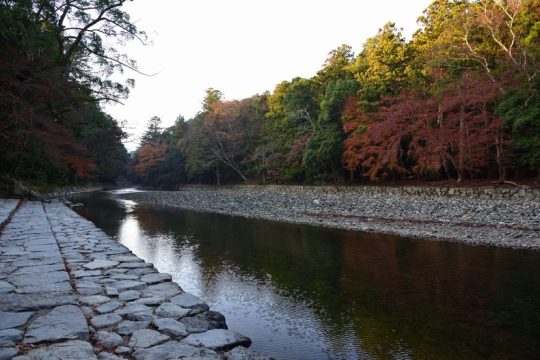
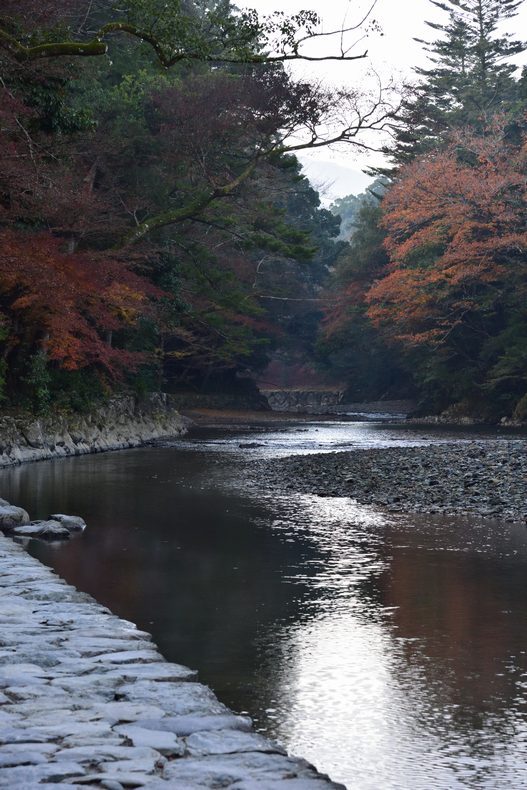


三重県 伊勢市 伊勢神宮 内宮
Japan Mie ise IseGrandShrine Naiku Shrine IseJingu
19 notes
·
View notes
Photo
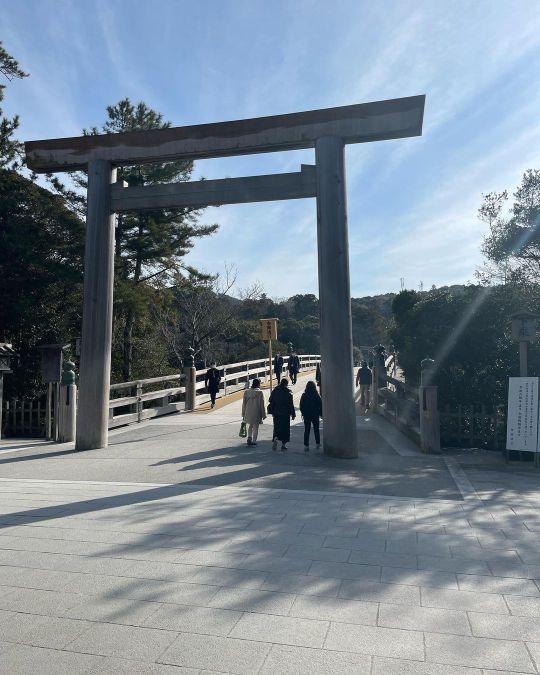
神宮。やはりこの場所は日本の神社の中でも特別な場所だと改めて感じた。五十鈴川、宇治橋、正宮、境内の全ての場所が自然の風景とも融合して馴染んでいくのがまた美しい。「常若」の精神で20年に一度式年遷宮を行う神宮だが、一昨年訪れた時と少し雰囲気が変わっていたように感じた。使用している木材にシミがついていたり少しずつコケがついていく様子も見れるというのは時代や時間の変化をしっかり感じることができる。五十鈴川の流れも以前訪れた時より、より穏やかで優しく訪れることができたことに感謝。#人生を変える旅#伊勢#神宮#内宮#パワースポット#神社#御朱印 (伊勢神宮 内宮 / Naiku) https://www.instagram.com/p/CnoyP7RviGg/?igshid=NGJjMDIxMWI=
0 notes
